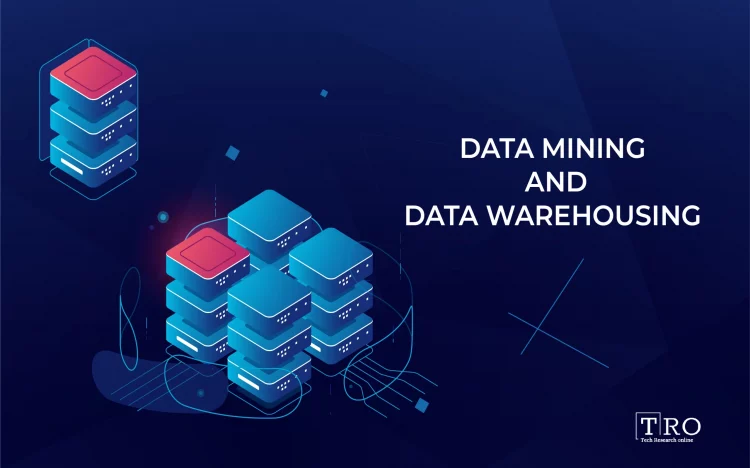In recent years, data mining has emerged as a vital process for enterprises as well as SMBs (small and midsize businesses). Data mining has helped transform the derived information into a comprehensible structure for further use. But what is data mining and what are its advantages?
In this blog, we will comprehensively discuss data mining as well as its various advantages in the world of business. Additionally, we will also discuss the difference between data warehousing and data mining and how the data warehouse is advantageous for businesses.
What is Data Mining?
Data mining is not only a buzzword in the business world but it also has frequent applications to any form of large-scale data or information processing as well as any application of computer decision support systems. In simple words, it involves the process of extracting and discovering patterns in large data sets that involve methods at the intersection of machine learning, statistics, and database system. Precisely, it is an interdisciplinary subfield of computer science and statistics with an overall goal of extracting information from a data set and transforming information into a comprehensible structure for further use.
Data mining is a key component of data analytics. It is one of the core disciplines in data science that uses advanced analytics techniques to find useful information in data sets. Interestingly, data mining is a misnomer. This is because the goal is the extraction of patterns and knowledge from large amounts of data and not the extraction (mining) of data itself.
To summarize data mining in simple words, it is the process of sorting through large data sets for identifying patterns and relationships that can help solve business problems through data analysis. The tools and techniques used enable enterprises to predict future trends and make more-informed business decisions.
Is Data Mining Crucial?
At a more granular level, data mining is a vital part of every organization’s analytics strategy. One can use the generated data in business intelligence and advanced analytics programs to further analyze historical data. Moreover, one can also use it for real-time analytics apps that study streaming data simultaneously as it creates and collects.
With that said, data mining can help with various aspects of corporate strategy development and management. For example, marketing, advertising, sales, customer service, supply chain management, finance, and many more. Additionally, data mining supports several other facets of an organization, such as fraud detection, risk management, cybersecurity planning, and others, that are security-oriented. Moreover, it is significant in fields such as healthcare, government, scientific research, sports, math, and others.
How does Data Mining Work?
Typically, data scientists are responsible for carrying out data mining. However, skilled BI and analytics professionals including data-savvy business analysts, executives, and workers working as citizen data scientists in an organization can also carry out the process.
The core elements of data mining include machine learning, statistical analysis, as well as data management tasks done to prepare data for analysis. Generally, the integration of machine learning algorithms and AI tools has further automated the process and simplified the mining of massive data sets, such as customer databases, transaction records, log files from web servers, etc.
The data mining process can be categorized into 4 primary stages: Data Gathering; Data Preparation; Mining the Data; Data Analysis and Interpretation.
1. Data gathering. This process involves identifying and assembling relevant data for an analytics application. Although the data may be located in different source systems such as a data warehouse or a data lake, one can also use external data sources. However, irrespective of the original source of the data, a data scientist can move to a data lake for the remaining steps in the process.
2. Data preparation. The next process involves undertaking a few steps before mining the data. Likewise, the first step is data exploration, profiling, and pre-processing. Lastly, the process is followed by data cleansing work for fixing errors and other data quality issues.
3. Mining the data. Once the data is prepared, a data scientist chooses the appropriate data mining technique and implements one or more algorithms to commence the mining process. In the case of machine learning applications, the algorithms (generally) must be trained in sample data sets. This is done in order to look for the information being sought before they’re run against the full set of data.
4. Data analysis and interpretation. After the data mining results are generated, they are further used to create analytical models to drive decision-making including other business actions. The data scientist or another member of a data science team also must communicate the findings to business executives and users. This is, however, often done through data visualization and the use of data storytelling techniques.
What are the various techniques for Data Mining?
Essentially, various techniques are used to mine data for several data science applications. However, one common use of data mining is pattern recognition, which is enabled by multiple techniques. Additionally, another common use is anomaly detection which aims to identify outlier values in data sets. However, popular data mining techniques are of the following type:
1. Association rule mining. Firstly, association rules are if-then statements that identify relationships between data elements in data mining. To access relationships, support and confidence criteria are used to assess the relationships—support measures how frequently the related elements appear in a data set, while confidence reflects the number of times an if-then statement is accurate.
2. Classification. Secondly, this approach assigns the elements in data sets to different categories defined as part of the data mining process. Examples of classification methods include Decision trees, Naive Bayes classifiers, k-nearest neighbor, and logistic regression.
3. Clustering. Thirdly, this process involves grouping data elements sharing particular characteristics into clusters as part of data mining applications. Some examples are k-means clustering, hierarchical clustering, and Gaussian mixture models.
4. Regression. Next, regression is another way to find relationships in data sets by calculating predicted data values based on a set of variables. In fact, one can also use decision trees and some other classification methods to do regressions.
5. Sequence and path analysis. In certain cases, data mining can also be carried out to identify patterns in a particular set of events or values leading to later ones.
6. Neural networks. A neural network is a set of algorithms that simulates the activity of the human brain. Neural networks are particularly useful in complex pattern recognition applications involving deep learning, a more advanced offshoot of machine learning.
What are the features of Data Mining?
Data mining analysis is certainly done by using properties of the focus of analysis. However, these properties can be the unique property of a focus component. Sometimes they can be properties of a level that is higher as compared to the focus component level.
Nevertheless, one can use profile features of varying complexity to capture the properties of the focus of analysis they want to include in data mining analysis. Essentially, every feature produces one column in the output table while the various feature types correspond to the different ways of transforming the input model in a way that the required properties of the focus of analysis are computed.
1. Focus attribute: Properties that depend only on a single focus component, e.g., store or day, are the simplest because their values are expressions over values that are already contained in the original database tables.
2. Aggregation: Typically, many properties are the result of an aggregation. Since the level of individual processes is difficult to predict, their properties must be aggregated to a significant focus level. However, in normal cases, the process of aggregation is carried out to all focus levels.
3. Aggregation split: While analyzing stores (especially the sales performances), it is customary to include the partial sales of important departments in the analysis. But, this can be easily done through an aggregation split. However, the daily store sales amounts are split into the sales amounts for individual departments.
4. Discretization: Certain data mining algorithms need categorical input instead of numeric input. In such cases, the data must be pre-processed so that values in certain numeric ranges are mapped to discrete values.
5. Value mapping: Significantly, value mapping is similar to the discretization of numeric features in which users can assign new values to discrete feature values.
6. Calculation: To calculate a feature from other features, any SQL expression can be evaluated. The calculation process is simple and involves adding or dividing two features, or it can be more complex as the problem demands.
What are the advantages of data mining?
Following are some of the advantages of data mining:
- Marketing and/or Retailing
Interestingly, data mining helps direct marketers by providing them with useful and accurate trends about their users’ purchasing behavior. Marketers can steer attention to customers based on these trends. Data mining can also help marketers in predicting likely preferred products by the customers. This can further help create an interactive and pleasant shopping experience for customers. Besides marketing departments, retail stores also benefit from data mining in similar methods.
- Banking and/or Crediting
Data mining is beneficial for financial institutions, particularly in the areas of credit documentation and loan records. The process also helps credit card issuers in disclosing potentially fraudulent credit card transactions. Although the technique is not completely accurate in predicting fraudulent charges, data mining can certainly help credit card issuers reduce their losses.
The process of data mining potentially aids law enforcers in identifying and busting criminal suspects by identifying suggestive patterns in location, crime type, habit, and other designs of behaviors.
Additionally, the process of data mining also helps researchers. Moreover, it allows them to accelerate their data analysis phase; thus, enabling those more time to work on multiple projects.
Oftentimes, people confuse Data Warehousing and Data mining as similar processes. Although both are processes to manage and maintain data, there is a significant difference between them. Concerning that, let us have a brief overview of data warehousing to learn how different it is from data mining.
What is Data Warehousing?
Data Warehousing is a technique for collecting and managing data from different sources to provide meaningful business insights. It is a combination of technologies and components that allows strategic use of data. In other words, data warehousing is the electronic storage of a large amount of information by a business designed for query and analysis instead of transaction processing. It is, basically, a process of transforming data into information and making it available to users for analysis.
In 1990, the term ‘Data Warehousing’ was first coined by Bill Inmon. According to him, a data warehouse is a subject-oriented, integrated, time-variant, and non-volatile collection of data that helps analysts to take informed decisions in an organization. In addition to that, a data warehouse offers generalized and consolidated data in a multi-dimensional view. It also provides Online Analytical Processing (OLAP) tools that help in interactive and effective analysis of data in a multi-dimensional space. This analysis further results in data generalization as well as data mining.
What are the features of Data Warehousing?
Following are the key features of a data warehouse:
- Subject-oriented: To begin with, the data Warehouse is subject-oriented as it provides information around a subject rather than the organization’s ongoing process. Hence, these subjects can be products, customers, suppliers, and many more. Instead of focusing on the ongoing operations, data warehousing focuses on modeling and analysis of data for decision-making.
- Integrated: Secondly, a data warehouse is constructed by integrating data from heterogeneous sources that enhance the effective analysis of data.
- Time Variant: Thirdly, data collected in a data warehouse is identified with a particular time period and provides information from the historical point of view.
- Non-volatile: Afterwards, non-volatile means the previous data is not erased when new data is added to it. A data warehouse is kept separately from the operational database and the data warehouse does not reflect any frequent changes.
What are the advantages of Data Warehousing?
Following are the advantages of data warehousing:
1. It provides rich historical data and adds further context to it by listing the required key performance trends surrounding the retrospective research.
2. A data warehouse not only converts data in myriad different forms into the consistent formats required by analytics platforms but also ensures its conformity. To do so, it further ensures that the data produced by various business divisions are of the same quality and standard. As a result, it allows for a more efficient feed for analytics.
3. Most importantly, a data warehouse boosts efficiency by gathering the data in one place and making it readily available in the appropriate format.
4. Not only does the data warehouse enables power and speed but it also offers a competitive advantage in key business sectors, ranging from CRM to HR to sales success to quarterly reporting.
5. It essentially helps derive better BI that further helps make better decisions and creates a higher return on investment across any sector of the business. As a result, it drives revenue by inducing better decisions that strengthen the business.
6. Data warehousing enables efficiency in data flow which boosts a business’s growth. This is specifically because this business growth is the core element of business scalability.
7. Presently, advances in data warehousing have enhanced business security—further enhancing the overall security of company data.
8. A data warehouse is particularly designed to manage massive levels of data and complex queries. Therefore, it is the high-functioning core of the data analytics practice of any business.
9. Additionally, data warehousing allows businesses to effectively strategize and execute against other vendors in their sector.
10. Lastly, a data warehouse improves the business decision-making process, which in turn provides a key competitive advantage to any business.
Are data mining and data warehousing different?
The key difference between data warehousing and data mining is that: Data mining is the analysis of data while data warehousing is the process of compiling information or data into a database used to store data.
Data mining vs Data warehousing:
Data Mining Data Warehousing It is the process of analyzing data patterns. It is a database system designed for analytical analysis instead of transactional work. In data mining, you can identify patterns using pattern recognition logic. Data warehousing involves the process of extracting and storing data for easier reporting. Here, the data is analyzed regularly. This involves the periodical storage of data. The process of data mining is particularly carried out by business users with the help of engineers. Data warehousing is entirely and only carried out by engineers. Basically, it is the process of extracting data from large data sets. However, it involves pooling all relevant together. The main focus of data warehousing is AI, statistics, databases, and machine-learning systems. Data Warehousing is mainly subject-oriented, integrated, varies according to time, and constitutes non-volatile data warehouses It comprises the process of pattern recognition logic for identifying patterns. Whereas, the process involves extracting and storing data to make the process of reporting more efficient. The procedure employs pattern recognition tools to aid in the identification of access patterns. The data is extracted and stored in an orderly format, thus making reporting faster and easier. Ex: As data mining aids in the creation of suggestive patterns of key parameters, it helps businesses to make the necessary adjustments to their operations and productions. Data mining is commonly used in the fields of customer purchasing behavior, items, sales, and others. Ex: A data warehouse adds value when connected with operational business systems like CRM (Customer Relationship Management) systems.
Samruddhi Chaporkar is a Technical Content Writer and Digital Marketer. She is passionate about sharing Tech solutions with the hope to make a difference in people’s lives and contribute to their professional growth. you can follow her on LinkedIn and Twitter.
Source by techresearchonline.com






























